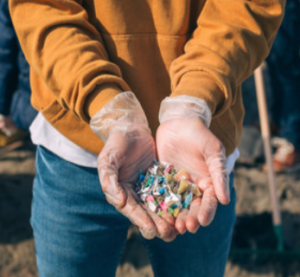Every year millions of tonnes of plastic make their way into our waterways. Over time, larger plastics break down into tiny pieces that can infiltrate lakes and rivers which serve as sources of drinking water. Prof. Robert Andrews is trying to figure out the potential impact to water consumers.

“We’re doing toxicology research along with other people around the globe, but we don’t have all the answers. Microplastics are quite different than any other compound that we monitor in water because there are so many different types of plastics with each containing a wide range of chemical additives to make them more flexible, UV resistant, etc.”
The goal of Andrews’ research is to help provide data to policymakers about microplastics in our water so they can determine what thresholds and regulations should be in place, meaning essentially: How much plastic is too much in our drinking water?
California recently became the first jurisdiction in North America requiring water treatment facilities to monitor for microplastics. Currently, Canada does not have a similar requirement, however recent funding provided by the federal government is allowing Andrews to carry out what he believes is Canada’s largest drinking water-related microplastic monitoring study. He cautions that we need to be careful about how this information is ultimately conveyed to the public.

“20 years ago, we were learning about pharmaceuticals in our water supply, but determined that they did not pose a risk to human health because concentrations were so low. Years before that, we were talking about pesticides in water. As such, microplastics represent one of the newest emerging contaminants that we need to look closely at right now.”
So, do we need to be afraid of what’s lurking in the water? Not right now, says Andrews.
“Forget water for a second, there are microplastics in the air we breathe as well. For example, we are likely ingesting tire particles kicked up into the air over major highways. There are millions of tonnes of plastic in the environment, but we don’t exactly know what this means with respect to long-term impacts. That’s why we must keep moving forward with research and do what we can to help support regulations that are designed to keep people safe.
BACK TO WORLD WATER DAY STORIES
By David Goldberg